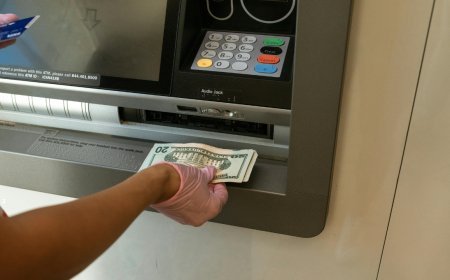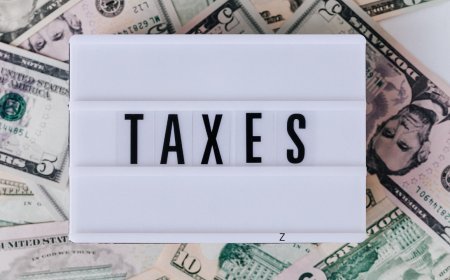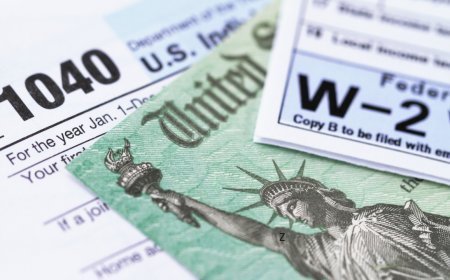End-of-Year Subscription Audit: Cancel and Save Hundreds in 2026
As 2025 nears its end, the holiday season offers more than festive cheer—it’s a prime moment to reclaim control of your finances through an end-of-year subscription audit. With the average American projected to spend over $1,080 annually on subscriptions, from streaming platforms like Netflix and Hulu to fitness apps, meal kits, and digital news, the financial toll is significant. Shockingly, nearly $204 of that goes to services we barely use, with younger generations, particularly Gen Z, wasting up to $276 yearly on forgotten or underutilized subscriptions. In an economy still grappling with inflation and rising costs, conducting a thorough audit now can help you eliminate unnecessary expenses, negotiate better rates, and redirect hundreds of dollars toward meaningful goals in 2026—whether that’s building an emergency fund, paying down debt, or funding a dream vacation. This comprehensive guide explores the urgency of auditing subscriptions, identifies the most common financial traps, and provides a detailed, actionable plan to streamline your spending for maximum savings.

The phenomenon of "subscription creep"—the gradual accumulation of recurring charges—has transformed into a global juggernaut, with the subscription economy reaching an estimated $1.5 trillion in 2025. For U.S. households, the numbers are staggering: on average, we juggle 5.4 paid services, with nearly one in four Americans spending over $100 monthly, equating to $1,200 annually. Streaming services alone, a staple for 61% of households, cost an average of $69 per month across four platforms, a 13% increase from 2024 driven by relentless price hikes. The hidden danger lies in our tendency to underestimate these costs, with surveys revealing that 90% of consumers misjudge their subscription spending by $100 to $300 each year.
Economic pressures amplify the need for action. In 2025, 26% of Americans have already canceled at least one subscription, and 24% are considering further cuts as inflation continues to strain budgets. Auditing in October, well before the holiday spending frenzy, helps you sidestep unexpected renewals and front-load savings for 2026’s financial priorities, such as tax season or new investments. Additionally, the FTC’s forthcoming “click-to-cancel” rule, expected by mid-2026, will mandate simpler cancellation processes, but proactive auditing now ensures you’re not overpaying in the interim. By identifying overlapping services—like paying for both Spotify and Apple Music—or unused memberships, you can reclaim cash for what truly aligns with your financial goals.
Common Subscription Traps: Where Your Money’s Leaking
Subscriptions are designed for convenience, but their ease often leads to waste. Below are the most prevalent categories draining wallets in 2025, based on usage trends and cancellation data, along with strategies to address them:
-
Streaming Video Services: With 61% of households subscribed, streaming platforms like Netflix, Hulu, and Disney+ cost $16 to $20 per month each. Many users maintain multiple services with overlapping content, such as similar shows across platforms, or keep subscriptions active during periods of low usage, like summer months when outdoor activities take precedence. Annual waste in this category can easily reach $100 to $200 per household.
-
Fitness and Wellness Apps: Used by 25% of Americans, apps like Peloton or ClassPass range from $10 to $40 monthly. These often go unused during busy seasons or after New Year’s resolutions fade, yet “maintenance” fees or auto-renewals keep charging. Canceling or pausing these can save $120 to $300 annually.
-
Music and Entertainment: Subscriptions like Spotify or Apple Music, costing $10 to $15 monthly, are held by 40% of households. Redundant services—such as paying for ad-free plans when free versions suffice or subscribing to bundled offerings like Amazon Music alongside Prime—lead to $50 to $120 in yearly waste.
-
Cloud Storage and Software: Services like iCloud or Adobe, priced at $5 to $20 monthly, affect 35% of households. Many users overlook free alternatives like Google Drive or open-source software, resulting in $60 to $150 in avoidable costs.
-
Meal Kits and Delivery Services: Popular with 20% of Americans, services like HelloFresh or DoorDash subscriptions range from $10 to $50 monthly. Forgotten pauses during vacations or infrequent orders can waste $100 to $400 annually.
-
News and Media Subscriptions: Digital subscriptions to outlets like The New York Times or The Wall Street Journal, costing $5 to $15 monthly, trap 15% of households. Free trials that auto-convert to full-priced plans or unread newsletters pile up, costing $40 to $100 yearly.
These categories thrive on consumer inertia, banking on forgotten trials, auto-renewals, or reluctance to navigate complex cancellation processes. In 2025, heightened awareness is key to avoiding these traps.
Your Comprehensive Subscription Audit Plan for 2026 Savings
To maximize savings and enter 2026 with a leaner budget, follow this detailed six-step audit process tailored for efficiency and impact:
-
Compile a Complete Subscription List: Start by reviewing bank and credit card statements from the past three to six months to identify all recurring charges. Look for less obvious culprits, such as subscriptions tied to PayPal, Apple Pay, or Google Play. Apps like Rocket Money, Truebill, or Trim can automate this process, flagging charges you might miss. Check email inboxes for subscription confirmations or renewal notices to ensure nothing slips through the cracks.
-
Evaluate Usage and Necessity: For each subscription, ask critical questions: When was the last time I used this service? Does it provide unique value, or is it redundant? For instance, if you’re subscribed to both Hulu and Disney+, evaluate whether their content overlaps significantly. Consider usage patterns—do you stream less in certain months or rarely open that news app? Quantify the value to decide what stays or goes.
-
Identify Free Trials and Auto-Renewals: Free trials are a major trap, often converting to full-priced subscriptions if not canceled in time. Review your subscriptions for any trials nearing their end and set calendar reminders at least a week in advance. Annual renewals, especially for services like cloud storage or antivirus software, can hit with unexpected $100+ charges. Mark these dates to reassess before they renew.
-
Negotiate Better Rates or Cancel: Many providers, particularly streaming and news services, offer retention discounts if you express intent to cancel. Contact customer service via phone, chat, or email to inquire about promotions or lower tiers. If a subscription doesn’t justify its cost, cancel it directly through the app or website. Be cautious of complex cancellation processes or “exit fees,” and document your cancellation request with screenshots or confirmation emails. Persistence is key until the FTC’s new rule simplifies this process.
-
Explore Cost-Effective Alternatives: Before renewing, investigate cheaper or free options. Share family plans for streaming services (e.g., Netflix’s household sharing or Spotify’s family plan) to split costs. Replace paid cloud storage with free tools like Google Drive or Dropbox’s basic tier. For news, leverage library access to digital publications or free newsletters. Fitness apps can often be swapped for free YouTube workouts or community classes, saving significant sums.
-
Maintain Ongoing Vigilance: Subscription creep doesn’t stop after one audit. Set quarterly reminders to review your subscriptions, especially after signing up for new services. Use budgeting apps like YNAB or Mint to track recurring charges in real-time. Consolidate subscriptions to a single credit card for easier monitoring, and consider setting spending alerts to catch unexpected renewals early.
Additional Tips for Long-Term Savings
Beyond the audit, adopt habits to prevent future waste. Pause subscriptions during low-usage periods, such as fitness apps during travel-heavy months or streaming services during busy seasons. Opt for annual plans over monthly ones where savings are significant—some services offer 10–20% discounts for yearly commitments. Be wary of bundled subscriptions, like those included with phone plans or Amazon Prime, as they may include services you don’t use. Finally, educate yourself on cancellation policies upfront to avoid surprises, and leverage online communities or forums for tips on scoring deals or finding free alternatives.
Launch 2026 with Financial Freedom
An end-of-year subscription audit is more than a cost-cutting exercise; it’s a strategic move to align your spending with your priorities. By rooting out wasteful subscriptions—whether it’s overlapping streaming services, unused fitness apps, or forgotten trials—you can redirect hundreds of dollars toward debt repayment, investments, or personal goals. In 2025’s economic climate, where every dollar counts, taking an hour or two this October to audit your subscriptions can yield significant rewards. Act now, cancel the excess, and step into 2026 with a leaner budget and greater financial peace of mind.
What's Your Reaction?
 Like
0
Like
0
 Dislike
0
Dislike
0
 Love
0
Love
0
 Funny
0
Funny
0
 Angry
0
Angry
0
 Sad
0
Sad
0
 Wow
0
Wow
0








































